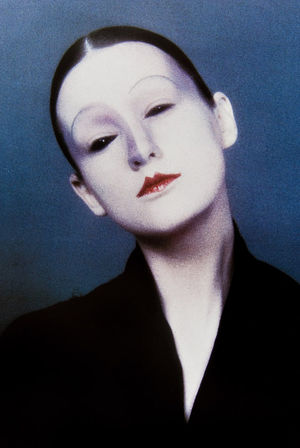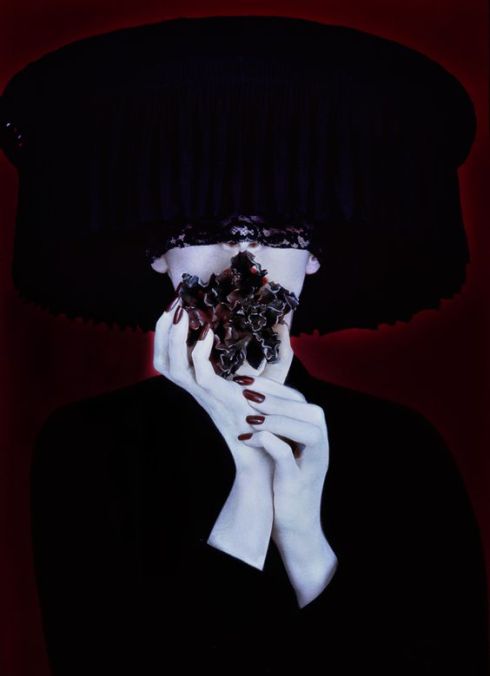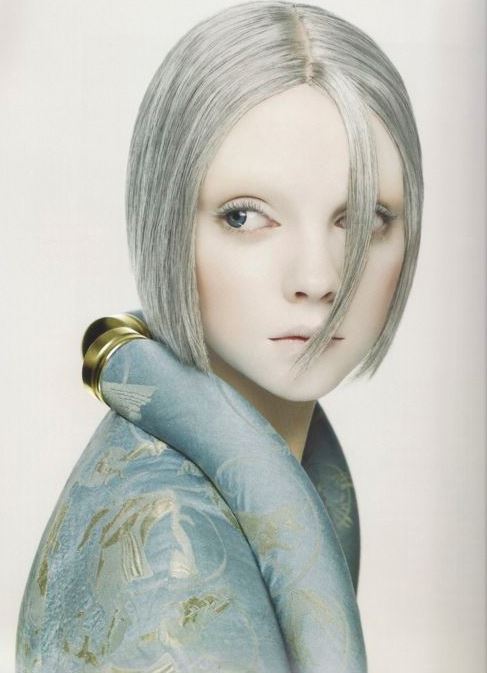 Vanessa Paradis, ph. Inez & Vinoodh , Vogue France
Vanessa Paradis, ph. Inez & Vinoodh , Vogue France
.
Vanessa Chantal Paradis (born 22 December 1972) is a French singer-songwriter, musician, actress, model and since 1991 a spokesmen for Chanel.
Short Biography
.
Vanessa Paradis is daughter to interior designers Corinne and André Paradis. She began to develop her singing career at age seven when her uncle, record producer Didier Pain, helped her appear on the local television program, a talent show for child singers.
She recorded her first single, “La Magie des surprises-parties”, in 1983 and performed it in an Italian festival in 1985. Although not a hit, it paved the way for the song with which she became internationally famous, “Joe le taxi“, in 1987 when she was 14. It was No. 1 in France for 11 weeks and, unusually for a song sung in French, was released in the United Kingdom, where it reached No. 3. It was taken from her first album M&J (it stands for Marilyn & John).
In March 1989, at age 16, Paradis left high school to pursue her career.
She released the album Variations sur le même t’aime in 1990, containing a remake of the Lou Reed song “Walk on the Wild Side“. The album was written by acclaimed French composer Serge Gainsbourg, whom she met when she received the best singer award at Les Victoires de la Musique, on 4 February 1990. The same year, Paradis won the César Award for Most Promising Actress for her role in Noce Blance.
In 1991, she promoted the fragrance Coco for Chanel. In the advertisement, she was covered in black feathers, portraying a bird swinging in a cage. The advert was shot by Jean-Paul Goude.
In 1992, Paradis moved to the United States to work with Lenny Kravitz, whom she also dated at the time. The new album was her first in English. Written and produced by Kravitz, the album, titled Vanessa Paradis, topped the French chart. One of the singles from it was “Be My Baby“, which made number 5 in France and gave her another Top 10 hit in the UK.
In March 1993, Paradis started her first international tour, the Natural High Tour. In April 1994, she filmed Élisa, under the direction of Jean Becker. Elisa was a big success in France, and was released internationally.
From 1997 on, she played in movies with the great French actors/actresses.
Ligne Cambon, Chanel handbags
The New Mademoiselle, Chanel handbags
ph. by Karl Lagerfeld
In 2004, Paradis promoted Chanel’s new handbags called Ligne Cambon. The next year, she modeled for Chanel again for The New Mademoiselle handbag. In 2008, she modelled for Miu Miu.
Miu-Miu Fall/Winter 2008
Ph.Mert Alas & Marcus Piggott
Vogue Paris cover
 ph. by Mert Alas & Marcus Piggott
ph. by Mert Alas & Marcus Piggott
.
Paradis released a new album (Divinidylle) in 2007. She started the Divinidylle Tour in October. Paradis won two ‘Les Victoires de la Musique‘ awards for this album in February 2008.
Canadian film director Jean-Marc Vallée cast Paradis in a starring role in his film Café de Flore, in which she plays the single mother of a down syndrome child in the 1960s. She garnered a Genie Award for Best Actress in a Leading Role at the 2012 Genie Awards.
In 2010 she became the face of Chanel’s new lipstick, Rouge Coco. She also became the face of their new handbag line, Cocoon.
Paradise’s 2011 international tour included performances in the United States, Canada, the United Kingdom, Europe and Turkey.
In May 2013, Vanessa Paradis released a new album, Love Songs. And this year she starred in the movie Yoga Hosers with her daughter Lily Rose (by ex-husband Johnny Depp), as a history teacher. She also was a member of the main competition jury of the 2016 Cannes Film Festival.
Vogue Paris December/January ’15/’16
ph. by Inez & Vinoohd
.
;
info: wikipedia
 Vanessa Paradis by Bruce Weber
Vanessa Paradis by Bruce Weber

























































































































